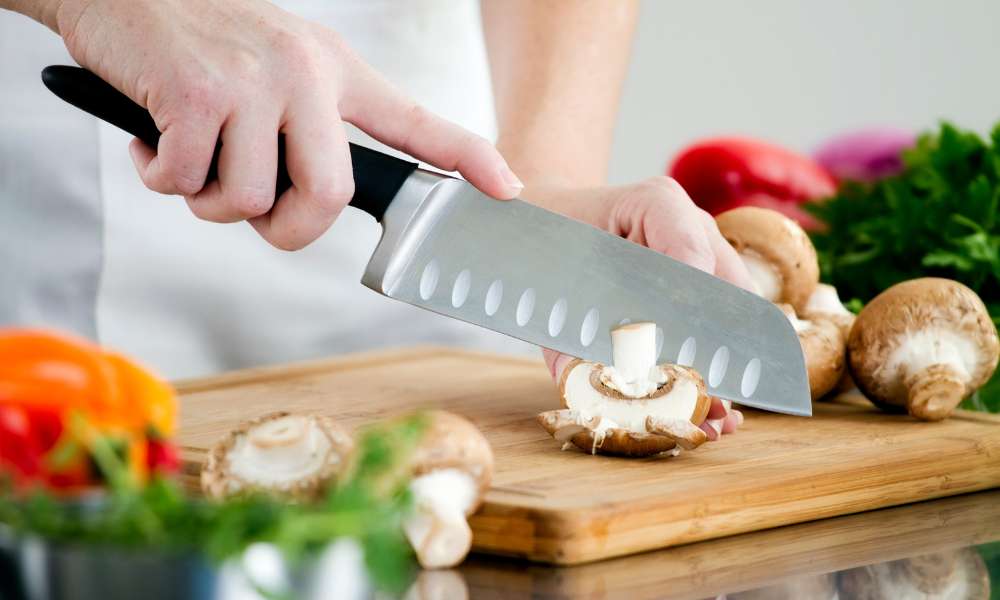Mastering the art of using a kitchen knife is essential for anyone passionate about cooking. Understanding how to use a kitchen knife not only enhances your culinary skills but also ensures safety and efficiency in the kitchen. By learning proper techniques, you can achieve precise cuts, maintain the integrity of your ingredients, and streamline your meal preparation process. This skill is vital for both amateur cooks and professional chefs, as it can significantly improve the quality of your dishes and reduce the risk of accidents. In this guide, we will explore the best practices for using a kitchen knive, the importance of maintaining sharpness, and tips to handle your knive like a pro.
How Often Should I Hone My Knife?
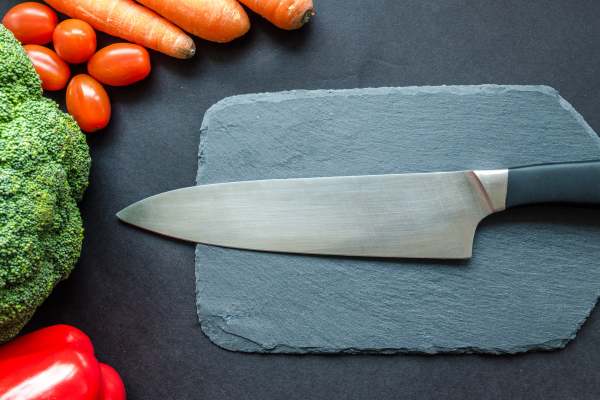
It is generally recommended to hone your knife before or after each use to maintain its sharpness. Honing helps realign the microscopic edge of the blade, keeping it sharp and prolonging the time between sharpenings. If you use your knive frequently, honing it regularly will ensure that it performs at its best and remains safe to use.
Can I Put My Knives In The Dishwasher?
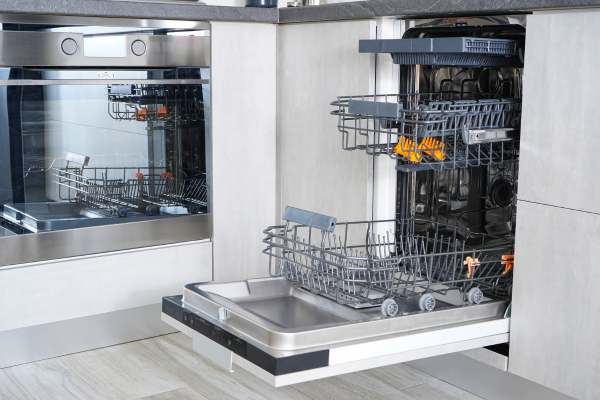
To properly care for your knives and maintain their sharpness, it is best to hand wash them with mild soap and warm water, then dry them immediately with a soft cloth. Store your knives in a knife block or on a magnetic strip to prevent damage to the blades. By taking these extra steps to care for your knives, you can ensure they remain sharp and in good condition for years to come.
Types Of Kitchen Knives
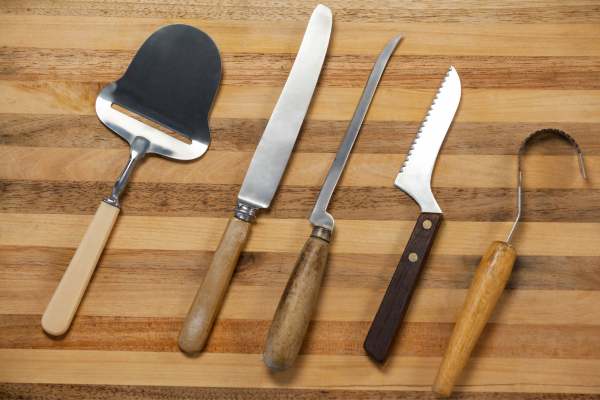
1. Paring Knife
The paring knife is a small but mighty tool, perfect for intricate tasks that require precision and control. This knive is ideal for peeling fruits and vegetables, deveining shrimp, and making decorative cuts. To use a kitchen knive like the paring knive effectively, hold it with a firm grip and use your thumb as a guide to control the blade, allowing for detailed and accurate cuts.
2. Bread Knife
A bread knife is distinguished by its long, serrated blade, which makes it perfect for slicing through bread without crushing it. This type of kitchen knive is also great for cutting through foods with a tough exterior and soft interior, such as tomatoes or melons. To use a kitchen knive like the bread knive, employ a gentle sawing motion, letting the serrated edge do the work to achieve clean, even slices.
3. Utility Knife
The utility knife is a versatile tool that sits between the paring knive and the chef’s knive in terms of size and functionality. It can be used for a wide range of tasks, from slicing sandwiches to cutting larger fruits and vegetables. When learning how to use a kitchen knife like the utility knive, focus on maintaining a steady hand and a smooth slicing motion to ensure precision and efficiency in your cuts.
4. Santoku Knife
Originating from Japan, the Santoku knife is renowned for its versatility and efficiency. This all-purpose knive features a flat edge and a granton edge (small indentations) that prevent food from sticking to the blade. To use a kitchen knive like the Santoku, employ a rocking motion for chopping, dicing, and mincing. Its design allows for swift, fluid movements, making food preparation quicker and more enjoyable.
Proper Handling
Proper handling of a kitchen knife is crucial for both safety and efficiency in the kitchen. When you use a kitchen knive, it’s essential to maintain a firm grip on the handle while ensuring your fingers are safely positioned. Curl your fingertips inward on your guiding hand to avoid accidental cuts, and always cut away from your body. Additionally, maintaining a stable cutting board will prevent slips and accidents. By mastering these basic handling techniques, you can significantly reduce the risk of injury and increase your cutting precision, making your cooking process more efficient and enjoyable.
Advanced Knife Techniques
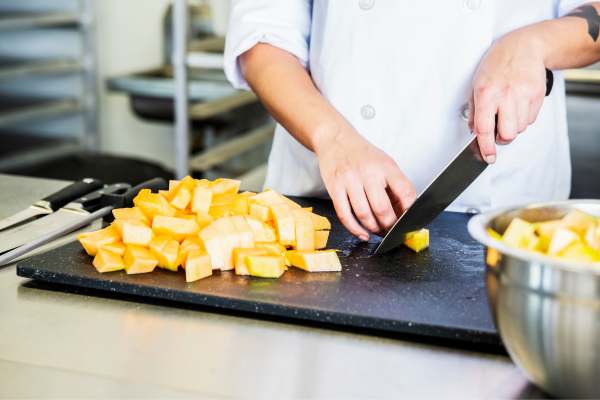
Once you’ve mastered the basics of how to use a kitchen knife, you can explore advanced knive techniques to further enhance your culinary skills. Techniques such as julienning, chiffonading, and brunoising allow for precise and intricate cuts, adding professional flair to your dishes. For instance, julienning involves cutting vegetables into thin, matchstick-like strips, ideal for stir-fries and garnishes. Chiffonading is perfect for herbs and leafy greens, creating fine ribbons that enhance both texture and presentation. Practicing these techniques regularly will not only improve your knive skills but also make your cooking more efficient and aesthetically pleasing.
Knife Maintenance

Maintaining your kitchen knife is essential for its longevity and performance. Regular sharpening and proper storage are key components of knive care. Use a sharpening stone or honing rod to keep the blade sharp, as a dull knive can be more dangerous than a sharp one. Additionally, always clean your knive immediately after use and store it in a knive block or on a magnetic strip to prevent damage. By taking good care of your kitchen knive, you ensure it remains a reliable and effective tool in your kitchen for years to come.
Cutting Different Foods
To cut different foods, one key aspect that often gets overlooked is the importance of maintaining a clean knife. Not only does a clean knife ensure better hygiene and food safety, but it also helps to preserve the flavors and textures of the ingredients being cut. To clean a knive effectively, it is advisable to wash it immediately after each use with hot soapy water and dry it thoroughly before storing.
Using The Wrong Knife
Improving your culinary skills begins with understanding the importance of using the right knive for each task in the kitchen. From chopping vegetables to filleting fish or carving meat, having suitable knives at hand makes all the difference in achieving professional results at home. Take some time to familiarize yourself with different types of kitchen knives and their uses so that you can unlock your full cooking potential and impress yourself with delicious meals every time you step into the kitchen.
Knife Skills For Specific Cuisines
Exploring other cuisines such as Thai or Indian, where aromatic herbs and spices play a crucial role in flavor profiles, delicate handling of knives to finely mince ingredients can truly elevate the dish. Additionally, mastering the art of using different types of knives – from cleavers to paring knives – in Chinese cuisine adds depth to your culinary repertoire. By honing these specific knive skills tailored to each cuisine’s requirements, you not only improve efficiency in the kitchen but also enhance the authenticity and flavors of your dishes.
The Final Thought
Mastering the art of using a kitchen knife is essential for any home cook looking to improve their culinary skills. By following proper techniques and safety measures, you can enhance your efficiency in the kitchen and elevate the quality of your cooking. Remember to keep your knives sharp, handle them with care, and practice slicing and dicing various ingredients to become more proficient. With dedication and practice, you will soon find yourself feeling more confident and comfortable wielding a kitchen knife.

